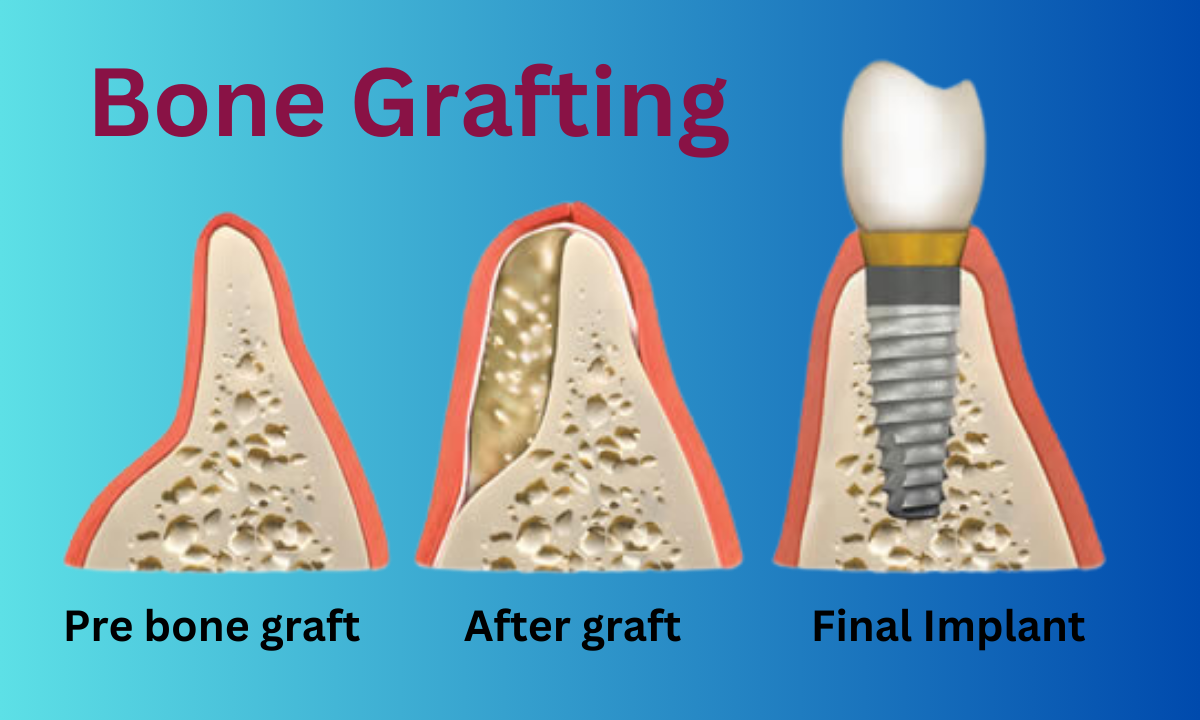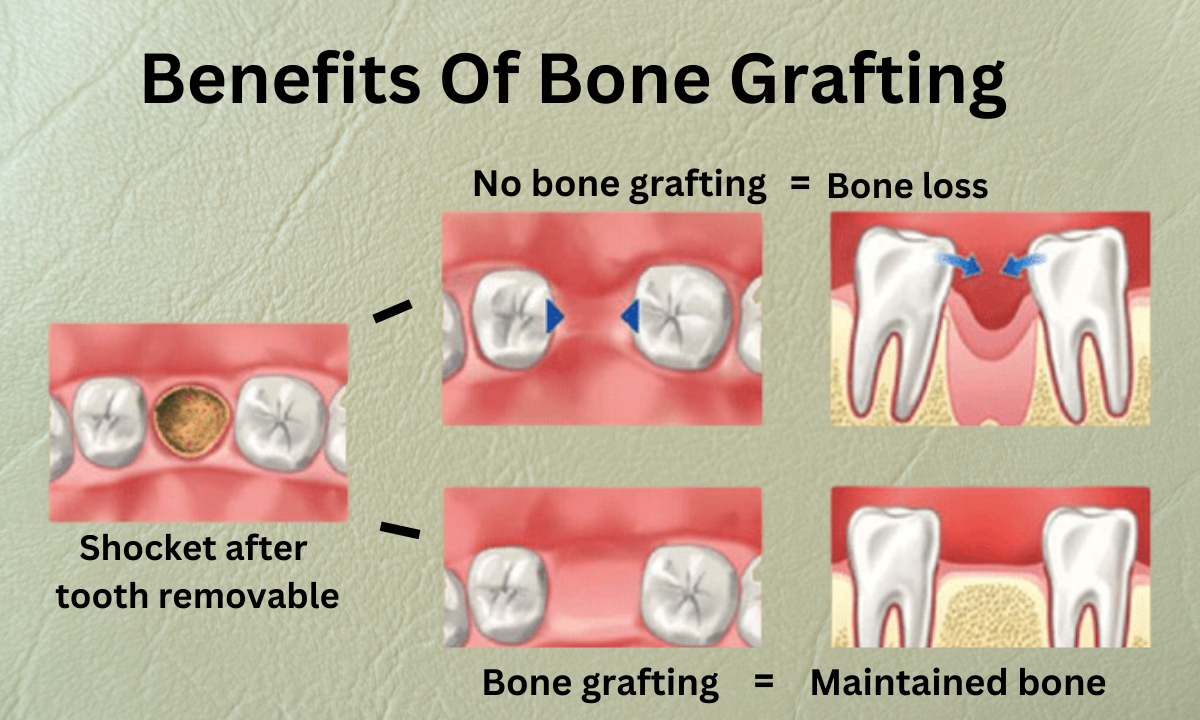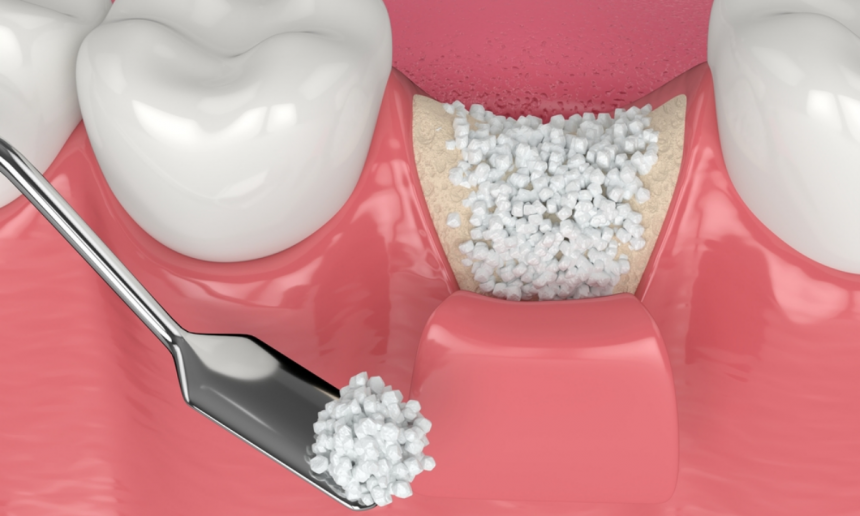A dental bone graft replaces missing or lost bone in your jaw. Healthcare providers commonly place bone grafts prior to dental implant surgery or when bone loss negatively affects your oral health. Initial healing takes about a week. But it can take up to one year for the bone graft to fully heal.
What is a Dental Bone Graft?

A dental bone graft is a surgical procedure that involves replacing lost bone in the jaw. The procedure is aimed at stimulating new bone growth and regeneration. The bone grafting material used for the process can be of four types: autografts, allografts, xenografts, and alloplasts. Autogenous bone grafts are obtained from the patient’s own bone, usually from the jaw, while allografts involve using bone from a human cadaver. The goal of a dental bone graft is to fill the jawbone in areas where bone growth has failed or is limited. The procedure involves placing material on the jawbone to enhance the healing process, which can take several months. Dental bone graft procedures are routine and safe, and they have helped many people restore bone loss and improve their oral health.
Benefits of a Bone Graft

Dental bone grafting is a unique technique that repairs and rebuilds bone structure in the jaw due to tooth loss, trauma or periodontal disease. In addition to repairing bone structure, bone grafting can also make you eligible for other restorative dental treatments such as dental implants. The human body has the natural ability to regenerate natural bone tissue entirely, given the necessary space and support.
Bone grafts can be performed using materials from the patient’s own body, a donor, animal bone or synthetic material. This allows for a wide variety of options, giving both the dentist and patient more flexibility in the procedure. Overall, the benefits of dental bone grafting go beyond repairing the jaw and can provide an array of oral health benefits.
Health Benefits of Dental Bone Grafting
Improved oral function
Bone grafts can help restore the integrity of your jawbone, which can help you regain proper speech and chewing function.
Bone grafts can help restore your facial structure and improve your smile’s appearance.
Bone grafts can help prevent further bone loss and maintain the health of your jawbone.
Bone grafts can provide a strong foundation for dental implants, crowns, dentures, and bridges.
Bone grafts can help maintain your facial structure and prevent premature aging.
Bone grafts can help reduce complications during dental procedures.
Types Of Dental Bone Grafts
Autograft
An autograft is a type of bone graft that involves taking bone tissue from one part of the patient’s own body, such as the chin, back of the jaw or hip, and transplanting it to the jaw bone where density is low. Autografts are considered the gold standard of bone grafts because the patient’s own bone is less likely to be rejected. It also contains bone-growing cells that increase the likelihood of successful bone healing. After having a tooth extracted, or is a tooth is missing due to another cause, it is important for the surrounding bone to be strong enough to support a dental implant.
Allograft
An allograft is a type of bone graft that involves using bone from a deceased donor. The bone tissue is thoroughly and carefully cleaned to reduce the risk of disease or bacterial transmission. Allografts are advantageous because the patient does not have to undergo another procedure to harvest bone.
Xenograft
A xenograft is a bone graft that uses bone material from an animal, typically a cow or pig. The underlying bone is carefully cleaned to reduce the risk of bacterial or disease transmission. Xenografts are less common than autografts and allografts, but they can be useful in cases where there is a limited amount of donor bone available.
Alloplast
An alloplast is a type of bone graft that involves using synthetic materials. These synthetic bone grafts are made from calcium phosphate or calcium sulfate, to create bone-like structures. This bone grafting material often used in cases where there is a limited amount of donor bone available.
How Is a Dental Bone Graft Procedure Performed?
Before the dental bone transplant process, you will meet with a periodontist or oral surgeon to discuss the treatment strategy and choose the appropriate bone grafting material. Your bone grafting technique will vary according to the reason for the therapy. However, you can generally anticipate the following steps:

Step 1: Anesthesia is the first step
Your dental professional will numb the operation location using a local anesthetic. Additionally, you may require IV sedation if the tissue is harvested from your own body or if you suffer from dental anxiety.
Step 2: Extraction and procurement of bone
If an autograph is used, the dental expert will locate the bone in the desired location. Similarly, if you require tooth extraction, the surgeon will perform it at this time. Combining tooth extraction with bone grafting results in a more rapid healing process.
Step 3: Graft placement
The dental practitioner will adequately clean the region. If an extraction is not necessary, the dental practitioner will incise the gum tissue to reveal the bone. Then, the bone graft material will be attached to the exposed bone.
Stitching is the fourth step. Sutures are used to seal the region once the graft material is in place. If the surgeon obtains the bone from your body, they will also suture the area closed.
Step 5: Recuperation
You may return home the same day as your procedure in most situations, although you may require a driver if you undergo sedation or general anesthesia. Four to six months — and maybe longer — will be necessary to heal and prepare for your dental implant thoroughly. Your dental practitioner will provide aftercare recommendations, which you should carefully follow to avoid failure or complications.
Dental Implants After Bone Graft Surgery
Complete healing following dental bone graft surgery can take three to nine months, although patients will likely feel back to normal within a week or two. The duration of recovery time depends on several factors, such as the type of graft, the area where the graft was placed, and the individual’s healing capacity.



